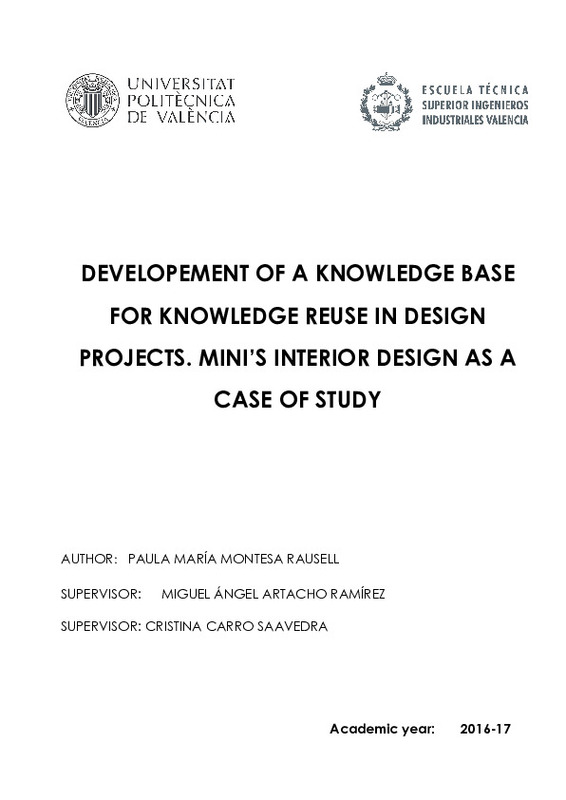|
Resumen:
|
[ES] En la actual era de la comunicación, el conocimiento es el principal valor empresarial. El acceso a los recursos es muy similar entre empresas, es por ello que el capital intelectual supone una gran barrera diferenciadora ...[+]
[ES] En la actual era de la comunicación, el conocimiento es el principal valor empresarial. El acceso a los recursos es muy similar entre empresas, es por ello que el capital intelectual supone una gran barrera diferenciadora en el éxito de la actuación de una compañía. Sin embargo, pese a ser conscientes del valor que supone el conocimiento, su reutilización no ocurre al nivel deseado.
El objetivo de este trabajo es impulsar la reutilización del conocimiento en proyectos de diseño en ingeniería. Para ello se deberá estudiar qué se entiende por conocimiento y por reutilización y por qué razón éste no ha sido exitosamente reutilizado, así como los requisitos teóricos que necesitan los diseñadores. Este trabajo se hará colaborando en un proyecto de innovación para BMW, determinando de este modo las necesidades prácticas de los diseñadores. De esta manera ambos requisitos, teóricos y prácticos, podrán ser validados y estudiados en detalle para ser posteriormente plasmados en una base de conocimiento que mejore el proceso de reutilización del mismo.
Esta base programada deberá ser evaluada, de manera que las hipótesis generadas durante la investigación teórica puedan ser confirmadas.
[-]
[EN] In the global world of todays, where markets are completely internationalized, the
environment changes rapidly and the competition is stronger than ever; companies struggle
to gain and keep competitive advantage. ...[+]
[EN] In the global world of todays, where markets are completely internationalized, the
environment changes rapidly and the competition is stronger than ever; companies struggle
to gain and keep competitive advantage. Since the internet and communication media have
allowed the information to be global and effortless obtainable, most companies have access
to the same processes and management systems, becoming the intellectual capital the one
remaining to make a difference between companies’ performances (Wiig 1997).
In time of Knowledge Age, people are realizing that knowledge is power. Past knowledge
can support the decision making process, avoid the repetition of mistakes and the time
waste. Furthermore due to the poorly effective knowledge reuse systems, designers spend
most of their time looking for existent solutions among complex knowledge repositories;
instead of focusing on new properties and new knowledge generation, improving the quality
of the product and its suitability to the customer needs (Salas, 2015, p.4). Balance between
activities that should be optimized to encourage innovation and product improvement.
The practical motivation for knowledge reuse systems is that the capture and reuse of
knowledge is less costly than its recreation (Fruchter & Demian 2002). To this end appeared
the concept of knowledge management. A discipline whose purpose is to maximize a
company´s knowledge reuse. Knowledge management is the “process of capturing,
developing, sharing and effectively using organized knowledge” (Koenig 2012). The focus
is then to support the knowledge sharing and creation, making this way possible a company
intellectual growth.
Keeping this purpose in mind, several researches have worked on the topic and established
different knowledge management processes to make the use of this resource possible.
Nevertheless, valuable knowledge still gets lost. Whenever an idea or background of a
decision is not well understood and properly externalized, knowledge will be lost.
[-]
|







